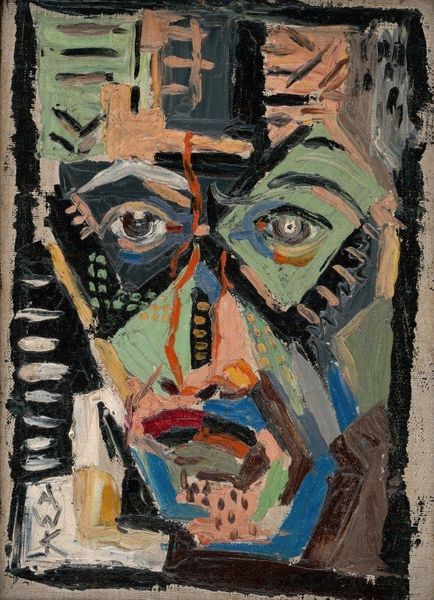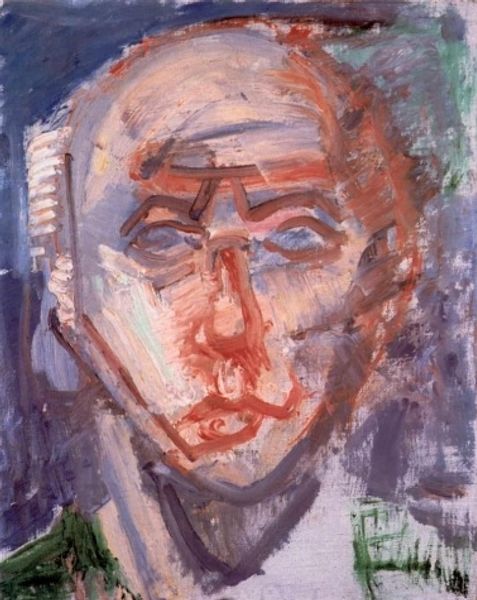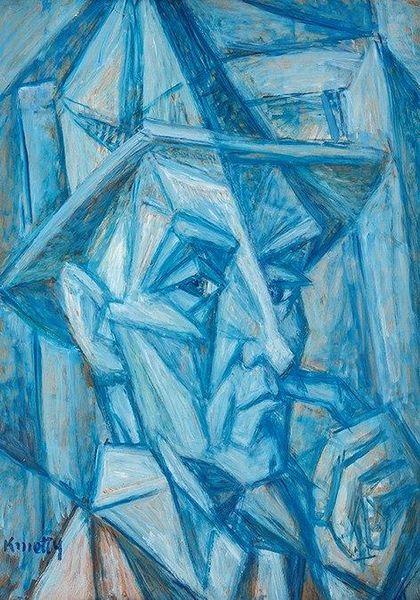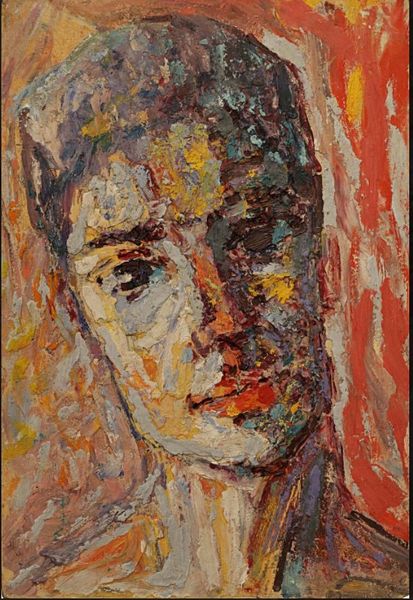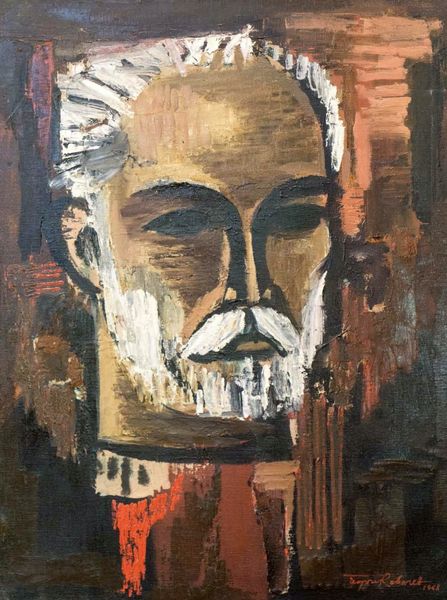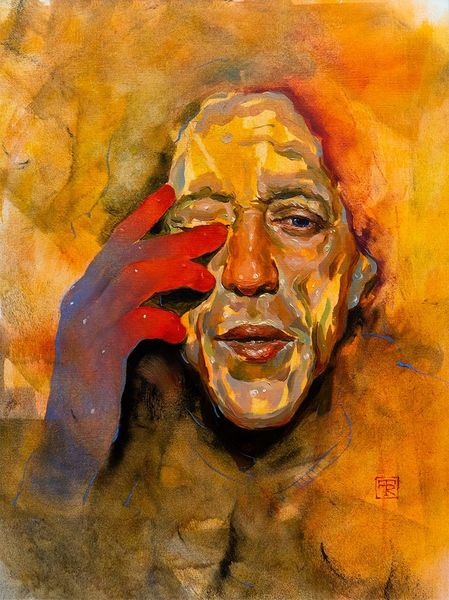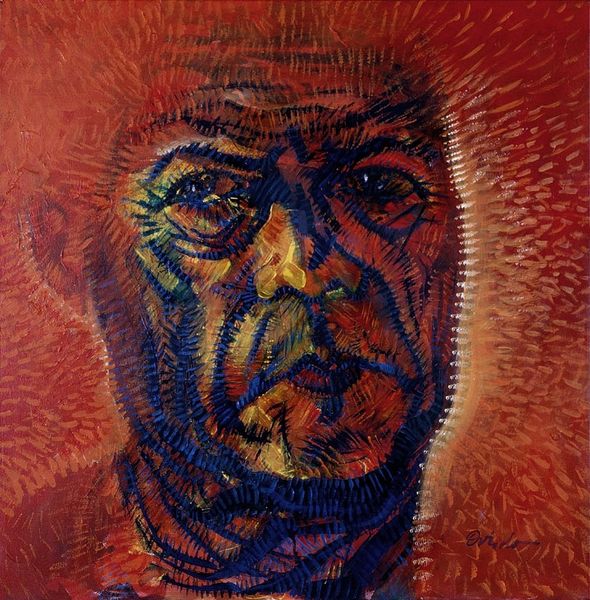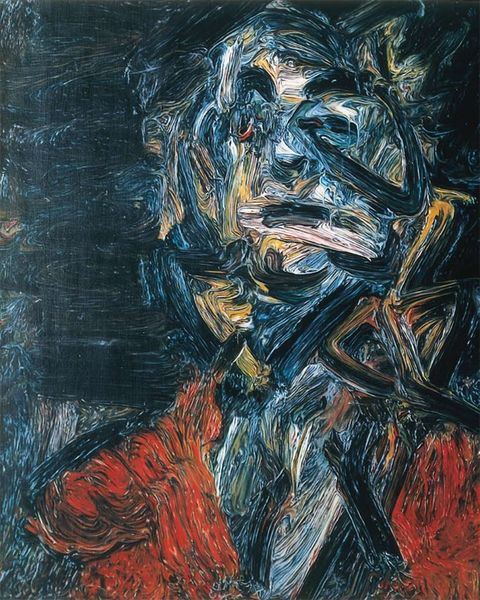
Copyright: Endre Bartos,Fair Use
Curator: I’m immediately struck by the raw emotion radiating from this self-portrait. The impasto technique, that thick application of paint, creates such a visceral texture. Editor: Indeed, this is Endre Bartos' "Self-portrait," executed in 1985. It’s a fascinating example of his exploration within neo-expressionism. Notice how he lays down acrylic paint almost like sculptural forms to build up this image of himself. Curator: The color palette, though bold, feels almost unsettling. Yellow and red clashing against somber blues and grays… it suggests a certain internal turmoil, perhaps? Editor: Neo-expressionism often used such heightened color to convey angst. The period was, after all, a turbulent one socially and politically. Bartos' work captures that sentiment. The exaggerated features speak to the destabilization of identity happening in Europe at the time. Curator: I see how these seemingly disparate patches of color cohere into a recognizable human face. The weight of the brushstrokes, especially around the eyes, lends an intense, almost mournful quality to the gaze. I detect signs of Fauvism which perhaps points to how Bartos builds from a historical memory of early abstract art. Editor: You’ve noticed that too. The gaze almost demands a reciprocal feeling, doesn’t it? This image certainly seems to acknowledge the cultural precedents of previous traditions of expressionism. Curator: This feels much less like a literal depiction and more like an exploration of self through layers of feeling. The face is more like a psychological map rendered in pigment and texture. Editor: Absolutely, the materiality of the painting is key. The way Bartos handles the paint, so directly and forcefully, feels almost like an act of self-excavation. Curator: Looking at it more, I'm left wondering if we are actually seeing more about ourselves. When an artist so frankly exposes their inner state, we can't help but consider our own experiences. Editor: A resonant point. Ultimately, Bartos’ "Self-Portrait" is more than just a likeness, isn't it? It's a window into the artist’s era and internal state as much as to ourselves as viewers.
Comments
No comments
Be the first to comment and join the conversation on the ultimate creative platform.
